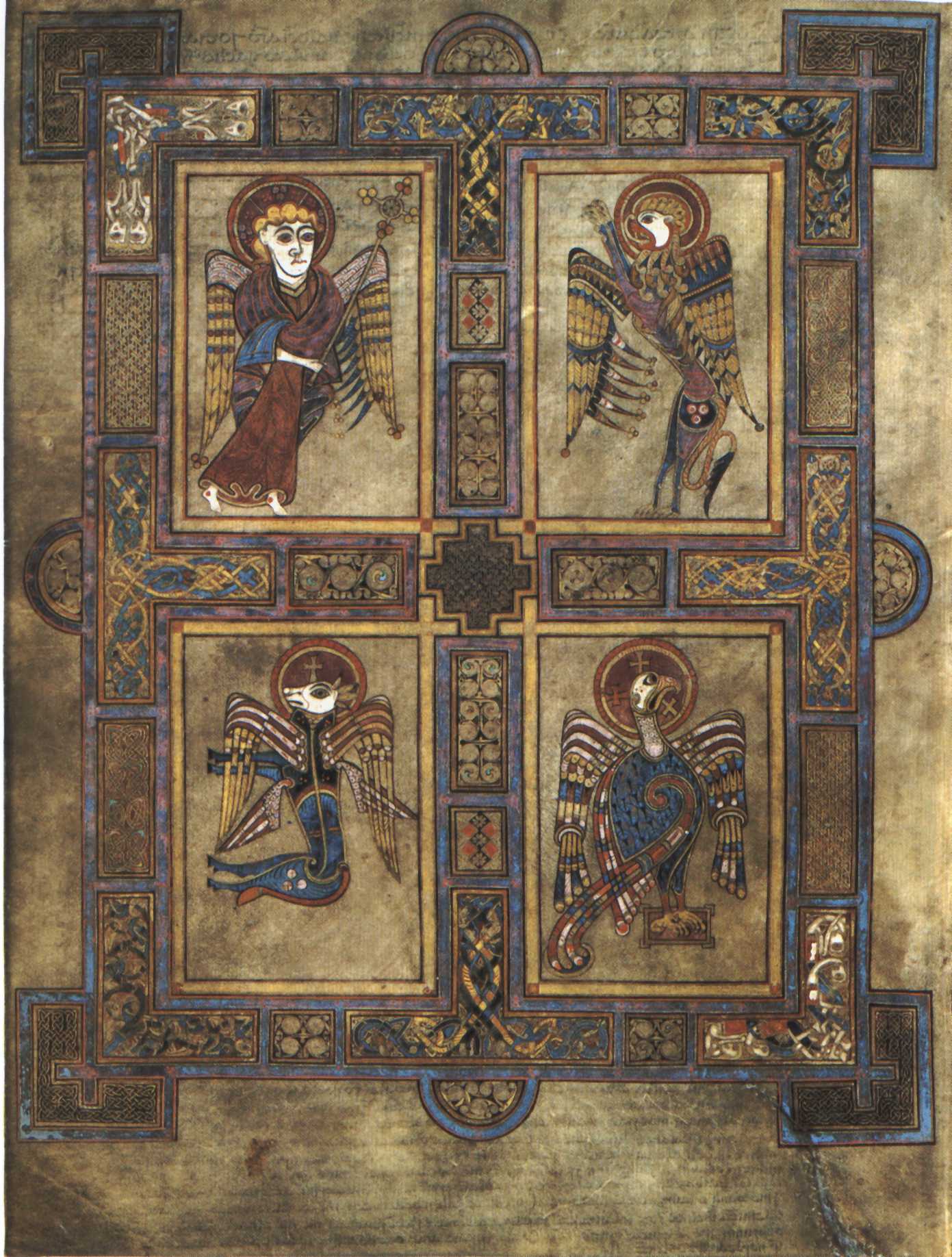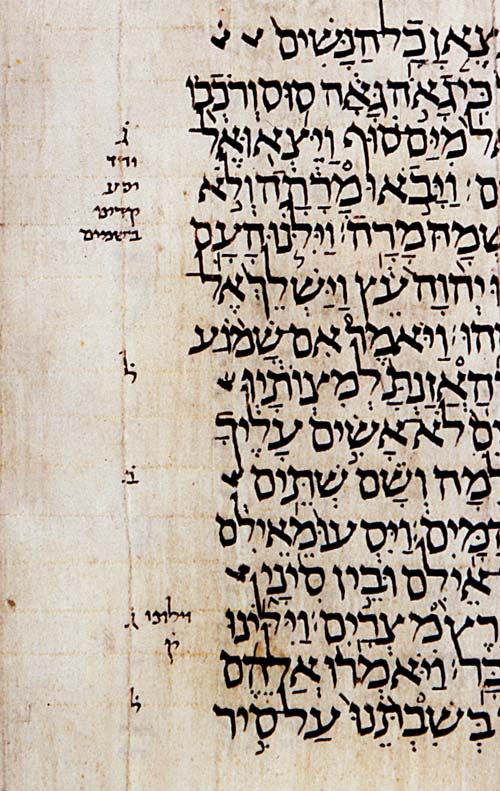This blog post contains Logos reference hyperlinks, a feature in the software that allows you to share what you find with other Logos users. These links only work for users who own the respective Logos resources. All links in this article will function for users with Foundations Library and above. More information can be found here.
[T]he Word, the Artificer of all, He that sitteth upon the cherubim, and contains all things, He who was manifested to men, has given us the Gospel under four aspects, but bound together by one Spirit. (Ireneaus, Adv. Haer. 3.11.8)
When you think of the story of our Lord’s birth or passion, you probably automatically bring together elements from all four Gospels—for instance, the adoration of the shepherds from Luke 2:8–18 and the adoration of the magi from Matthew 2:1–12. The Scriptures tell the story of the life of Christ through the “fourfold Gospel” (cf. Dei Verbum 18) of Matthew, Mark, Luke, and John, but it’s natural for us to try to put these four perspectives together in a single narrative. Over the centuries, this has given rise to much reflection on the nature of divine revelation and the particular interpretive puzzles that arise from comparing and harmonizing the Gospels.
 Church Fathers such as St. Irenaeus, St. Augustine, and St. Jerome speculated on the divine providence behind this fourfold Gospel, the relationship between the four Gospels, and the particular purpose of each. St. Augustine even devoted an entire work, De consensu Evangelistarum, to the subject, and from these Fathers comes the traditional association of each of the evangelists with the four living creatures described in Revelation 4:7. (See Irenaeus, ibid., Augustine, De consens. Ev. 1.6.9., Jerome, Preface to the Commentary on Matthew.) Interest in the subject has never ceased, and biblical scholars continue to be occupied with determining the relationship between the Synoptic Gospels.
Church Fathers such as St. Irenaeus, St. Augustine, and St. Jerome speculated on the divine providence behind this fourfold Gospel, the relationship between the four Gospels, and the particular purpose of each. St. Augustine even devoted an entire work, De consensu Evangelistarum, to the subject, and from these Fathers comes the traditional association of each of the evangelists with the four living creatures described in Revelation 4:7. (See Irenaeus, ibid., Augustine, De consens. Ev. 1.6.9., Jerome, Preface to the Commentary on Matthew.) Interest in the subject has never ceased, and biblical scholars continue to be occupied with determining the relationship between the Synoptic Gospels.
From early on, this reflection led to efforts to harmonize the text of the four Gospels, such as the second-century Diatessaron of Tatian, which weaves the text of the Gospels into a single narrative, and Eusebius of Caesarea’s system of canons for dividing and aligning the pericopes of the Gospels into parallels. The Diatessaron can be found in volume 9 of the Ante-Nicene Fathers, but the Eusebian Canons and several modern Gospels harmonies are contained in Logos’ “Bible harmony” resources.
Most Bible harmony resources align parallel verses or passages side by side in tables, and, like Logos lectionary resources, dynamically insert the Scripture text from the translation of your choice. You can choose which translation to display from the menu at the top of the resource pane:
In addition to resources that align Gospel parallels, the Catholic Libraries contain Bible harmonies that line up other related Bible texts as well. You can bring together, for example, the parallels between the books of Samuel and Kings and the books of Chronicles or the New Testament quotations of the Old Testament and their Old Testament sources.
The Passage Guide makes parallels from these harmony alignments easily available in the Parallel Passages section.
This Passage Guide section makes it easy to see where a Gospel reading has parallels in the other three Gospels or where it has quotations from or allusions to the Old Testament. You can click on the section headings to open the Bible harmony resource. Note, too, that for the Old Testament quotations, it works both ways, so if you’re studying an Old Testament passage, Parallel Passages will show you where the text is quoted in the New Testament.
So perhaps you don’t yet have the command of the Scriptures that St. Augustine displays, but Parallel Passages makes it easier for you to study Gospel parallels side by side and discover relationships between passages so that you can interpret them in light of the whole canon.
UPDATE:
User Dominick Sela asked about layouts for taking advantage of parallel passages and harmonies. Below is a simple one I’ve put together for Gospel harmonies with some ideas for using a couple of tools for getting information out of these resources.
- I’ve created a custom Guide Template that only contains the “Parallel Passages” section from the passage guide.
- I’ve added the tag “Harmony” to ANF9 and NPNF1:6, which contain Tatian’s Diatessaron and Augustine’s Harmony of the Gospels, then used the Cited By tool to just search resources with this tag. (This gives some false hits from other works in these volumes, but the reference is visible, so you can distinguish them.)
- I’ve set up both with a Bible and one of the harmony resources in a link set. The parallel resources button on the harmony also gives quick access to the other harmony resources.
You could expand on this to set up additional harmony resources in the link set, have the Cited By search more resources, etc. Or, if you wanted to focus it more on Old Testament quotations, you could set up the two harmonies focused on that in the link set and, if you own them, include resources like the Commentary on New Testament Use of the Old Testament.











Very informative post. When will the Catholic practicum be ready and how does it compare to camp logos 2?
The Catholic Practicum is still in Pre-Pub, so it is hard to say exactly when it will be available.
Camp Logos 2 is very informative and applicable as a general Logos resource. While Practicum will focus more on Catholic settings and applications, Camp Logos 2 is very helpful and worthwhile. (And available now.)
Great article. Is there chance you could recommend a Layout in Logos that has all the harmonies, allusion texts, links etc. that optimizes this type of Bible study?
I have some ideas. I’ll see if I can work something out and post an update with a screenshot later today.
The update is live. Sorry for the delay!